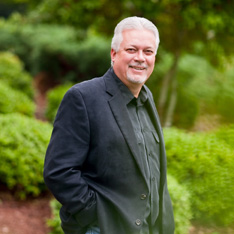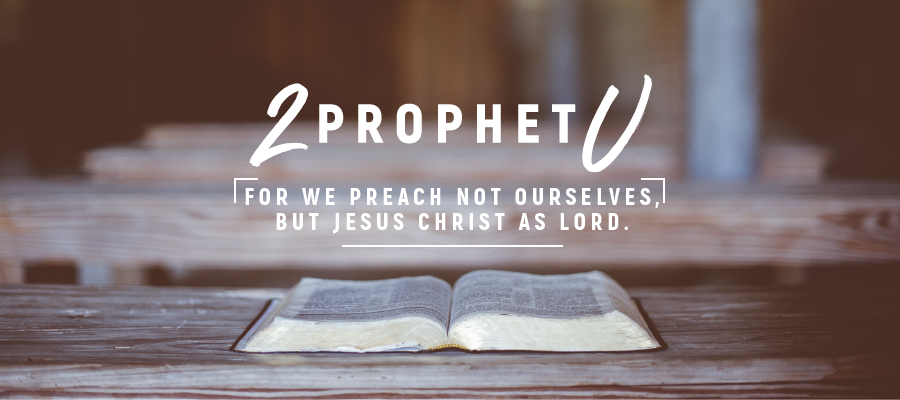Lessons Learned In A Building Program (Part 1)
Two years ago last month, we completed a 10.6 million dollar building program at Sherwood. It was exhausting but a positive experience. Most pastors leave right after a building program. I’m not sure why, but I understand it. Going through the process, you spend a lot of time and energy. Unfortunately, you don’t always get to see the fruit of your labor if you move on shortly after a building is completed.
In this article, I want to share some of the truths that God taught me during this process. I hope these will help. If you are going through a building process or have gone through one, I’d be interested in hearing from you about what you learned.
One. There comes a time when you have to get out of the boat if you are going to walk on water. We are often afraid of what others will say or think. Casting vision is not for cowards. You have to stand with conviction (bathed in kindness) and say, ‘This is the way, walk in it.’ It may be safe in the boat, but God leads us to get out of our comfort zone and do that which brings Him glory.
Two. Every delay in obeying God is costly. When I came to this church, I discovered there had been numerous decisions in the past which, I felt, were not of God. At one point in the 1960’s, they had an opportunity to buy some property across the street for $50,000. Because a handful of folks blasted the idea, they backed off- even after voting to do it. We bought that property in 1990 and it cost us nearly $500,000.
When the church built the Worship Center we were using until two years ago, it was a painful and expensive process. The reason we had to build in 2000 is because they didn’t build the right facility in the 1970’s. Again, a handful of folks caused such a stir, that plans for a 1,500 seat facility were scrapped and a 900 seat facility was built instead. The end result? We had to build a multi-million dollar worship center because we were in an inadequate ‘compromise’ facility.
Three. Life is not a Dress Rehearsal. Too many pastors live their lives with regrets. It seems the life words for most pastors is ‘could have…should have…if we had known then what we know now, we would have.’ There are no do overs in the kingdom. We get one shot to make a difference. Whatever you are going to do for God, do it now.
Four. Every generation leaves a legacy. That legacy is good, bad or indifferent. It is a legacy of vision or of unbelief. It is a legacy of sacrifice or selfishness. It is a legacy of giving or of greed. Those who come behind us will either find us faithful or faithless.
Five. The average life of a church is forty years. Only by planning and persevering does a church extend her life beyond one generation. If you and I are going to make a difference, we can’t do our planning based on the current generation, but those who are yet to come. Churches that fail to plan will fail. Those who do not see the fields white unto harvest are destined to be cast aside. The doors may still be open, people may be gathering, but the presence of God is missing.
Six. The pastor has to lead, communicate clearly and move out. The leader can’t lead from the sidelines. As a leader, we are expected to set vision, communicate the vision, give to the vision and sell the vision. A building program is a time when the pastor must lay his life, his energy, his reputation on the line. We can not wait until everyone is on board. We have to get ahead of the crowd and lead them to a new a great day.
Seven. Without a vision, people perish and without a plan, they flounder. Planning is essential to success. Don’t throw plans together. Work through them. Pray over them. Fine tune your plans. Seek Godly counsel. Let people see where you are going and show them how they can get there too.
Eight. If your church is standing still, it’s backing up. Status quo is deadly. There are two kinds of pains in a church, growing pains and dying pains. To stand still is to backslide. We are to storm the gates of hell, not dig trenches and hold on until Jesus comes back. Leaders don’t wait for ideal circumstances, they make their circumstances. They don’t wait for things to happen, they anticipate what could happen.
Nine. Do it right the first time. It costs money to cut corners. We built a state of the art facility. We didn’t bring any old media equipment into our television ministry, we started in the new building with all new, digital equipment. We went state of the art with our sound. We did the little things that aren’t noticed by the untrained eye. We installed state of the art IMAG projectors. The three we use were the first off the assembly line when we bought them. You get what you pay for. Cheap thinking makes a cheap building. God’s work deserves God’s best. If excellence is not a part of your vision, then your vision is not worthy of God.
Ten. To be a multi-cultural and multi-generational church requires clear communication and change. It also requires commitment on the part of the pastor, concentration on the part of the leadership, communication to the people in the pew and continual sacrifice by all. It’s easy to be one dimensional and focus on one generation. We’ve chosen to believe that multiple generations can worship in one place at one time. Today, at least eight different generations are represented in our services. We are intentional in reaching all people, from all walks of life and teaching them how to get along in the power of the Holy Spirit.
Eleven. Every community needs a regional church. Some church must wear the mantle of going outside the walls, impacting and influencing other churches and offering ministries and services that others can not offer. We believe our role in this region is to be a pacesetter in casting vision, a leader in Biblically based programming for all ages, an example of a ‘house of prayer’ an model in missions giving and service to the community.
Twelve. Learn to think outside the box. Like the old commercial, walk around asking, ‘What if…’ and see what happens. We have theater seats, a blacked out ceiling, a ‘rock and roll’ sound system and huge stage, because I took a group to Senior Adults to a musical theater and said, ‘What if we built a church like this?’ They saw it, caught it and helped me sell it. I said, “If it’s good enough for a secular show, it’s good enough for us.” They figured it out. Don’t let what others have done or have not done, limit your thinking. Dream big. Think big. Paint the picture. We’re in the kingdom construction business. We don’t build birdhouses.
Next issue, we’ll continue with this topic. I hope it has helped you get your juices flowing.
©2003 MCC

Michael served as the President of the Large Church Roundtable, the Southern Baptist Convention as an IMB Trustee, President of the Georgia Baptist Convention’s Preaching Conference, Vice President of the Georgia Baptist Convention, and President of the 2008 Southern Baptist Convention Pastors’ Conference. He has spoken at conferences, colleges, seminaries, rallies, camps, NBA and college chapel services, well as The Billy Graham Training Center at The Cove. Michael is the recipient of The Martin Luther King Award, The MLK Unity Award, and a Georgia Senate Resolution in recognition of his work in the community and in racial reconciliation.
Michael and his wife, Terri, have two grown daughters, Erin and Hayley.
 Warren Wiersbe Podcast
Warren Wiersbe Podcast
- An error has occurred, which probably means the feed is down. Try again later.
 Sherwood Baptist Podcast
Sherwood Baptist Podcast
- An error has occurred, which probably means the feed is down. Try again later.

Leave a Reply